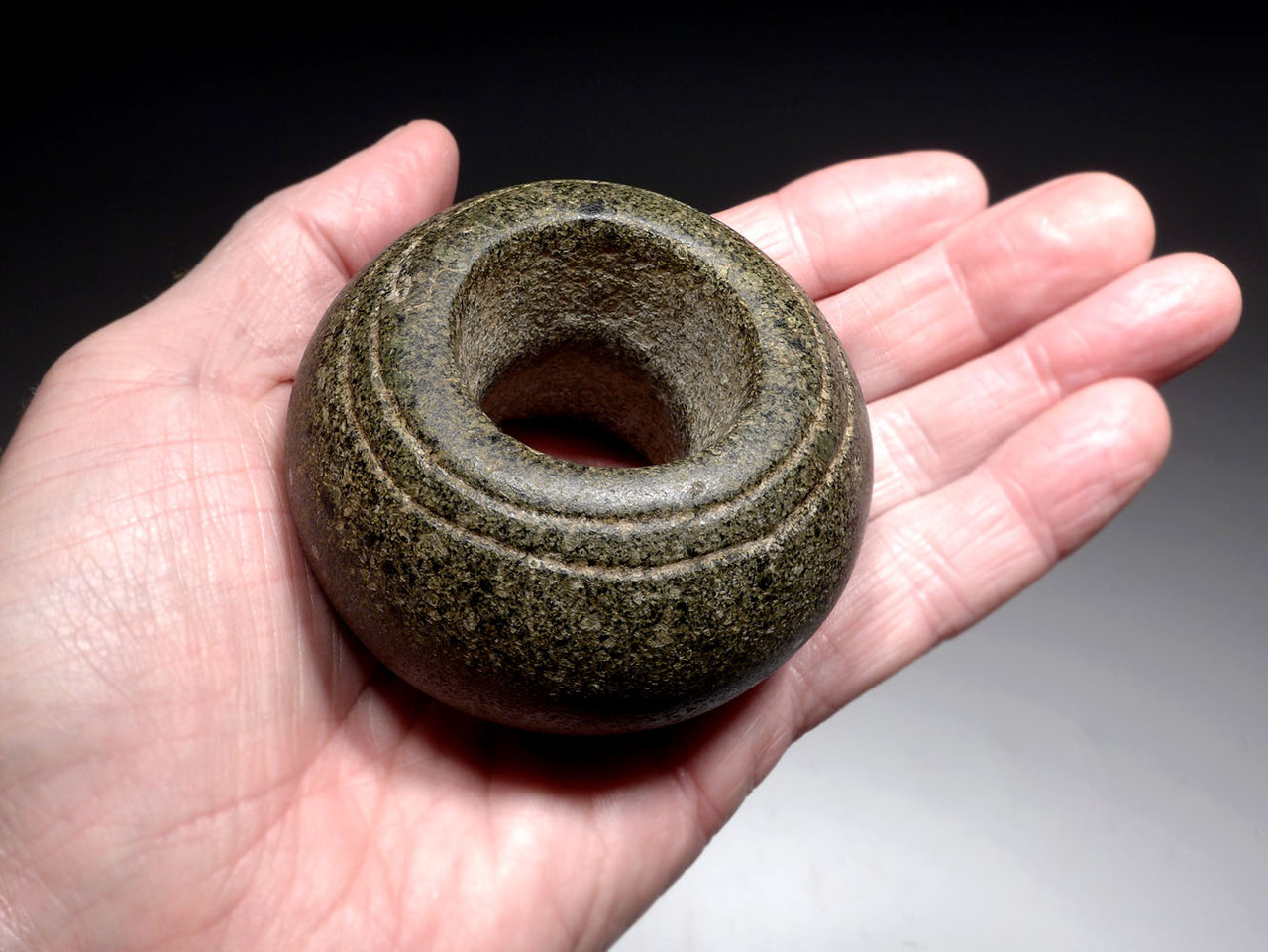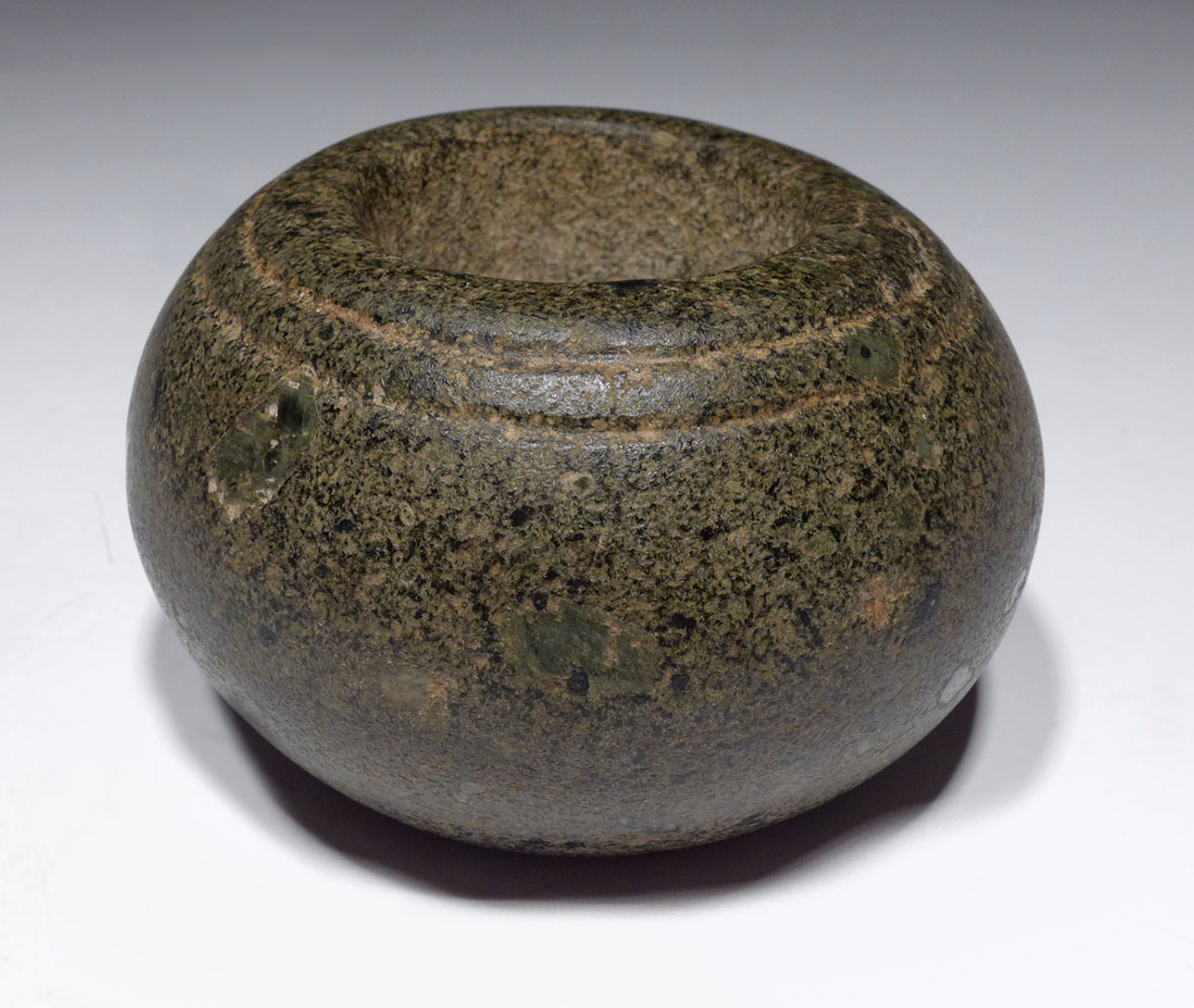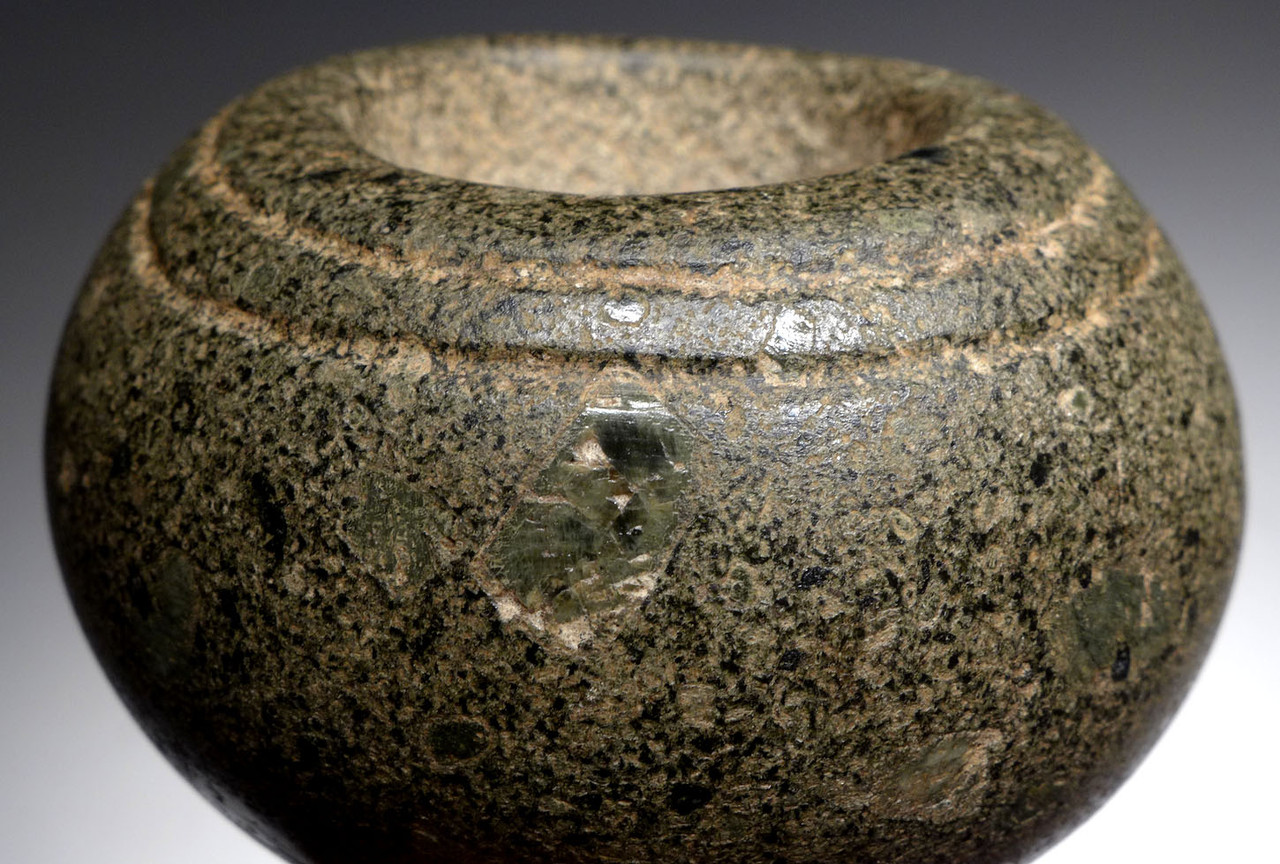Product Description
SEE MORE PRE-COLUMBIAN TOOLS AND WEAPONS
Expertly fashioned out of a stunning green porphyry stone, this exceptional globular war mace head comes from the Greater Nicoya Pre-Columbian Culture. The large drilled opening indicates this was a functional weapon meant to be mounted on a substantially thick shaft handle. The workmanship and polish are on the highest level suggesting this was a mace carried by a noble or high ranking warrior. Two sets of two incised lines decorate the surface near the shaft hole above and below the mace head. The stone shows a beautiful and varied make up of substances famous for porphyry stone. It boasts of NO modern damage which is hard to find in authentic pieces. Ancient mineral deposits are intact and impacted in all microscopic crevices with no evidence of modern grinding - a trait ONLY seen in AUTHENTIC specimens.
HISTORY
The Kingdom of Nicoya, was an indigenous nation that comprised much of the territory of the current Guanacaste Province, in the North Pacific of Costa Rica. Its political, economic and religious center was the city of Nicoya, located on the peninsula of the same name, which depends on several provinces located on both banks of the Gulf of Nicoya, as well as numerous tributary villages. In the 16th century, prior to the arrival of Europeans, Nicoya was the most important chiefdom of the North Pacific of present-day Costa Rica.
In archaeological terms, the territory of Guanacaste is part of the archeological region of Greater Nicoya, which extends from the Gulf of Fonseca in Honduras, covering the entire Pacific of Nicaragua, to the northern Pacific of Costa Rica. The Greater Nicoya has been divided, for its study, into two subregions: the northern or Nicaraguan subregion (Nicaragua Pacific) and the southern subregion or Guanacaste (Nicoya Peninsula, the Tempisque river basin, the piedmont and the highlands of the Guanacaste and Tilarán mountain ranges in Costa Rica). In this last subregion is the Kingdom of Nicoya.
In the Greater Nicoya, there was a constituted cultural center that flourished for approximately 2000 years. Archaeological research shows that the Nicoyan society achieved a complex social organization and a high degree of cultural development. Upon the arrival of the Spaniards into Nicoya in the 16th century, they found complex cities and governments, specialized agriculture that included irrigation, arts and crafts, highlighting the triad of polychrome ceramics (whose tradition has been inherited by Guanacastecan artisans to this day), the making of jewelry from jade and the manufacture of stone metates, with various regional styles. For 1200 years, the Nicoyan cultural tradition in Guanacaste was clearly established as a distinctive entity.
The people had no written language but spoke Nahuatl and had continual contact with the Aztec (Mexica) Indians of Central Mexico. Gran Nicoya art included many beautiful designs incorporating a variety of different mammals, reptiles and amphibians in effigy pieces. Their pottery is also known for complex glyph-like painted decorations. In the first 500 to 600 years A.D., resources became low as populations grew and warfare become increasingly evident. Tribes in this region practiced head-hunting and victim sacrifice in their warfare.
 US DOLLAR
US DOLLAR
 EURO
EURO
 AUSTRALIAN DOLLAR
AUSTRALIAN DOLLAR
 CANADIAN DOLLAR
CANADIAN DOLLAR
 POUND STERLING
POUND STERLING
















